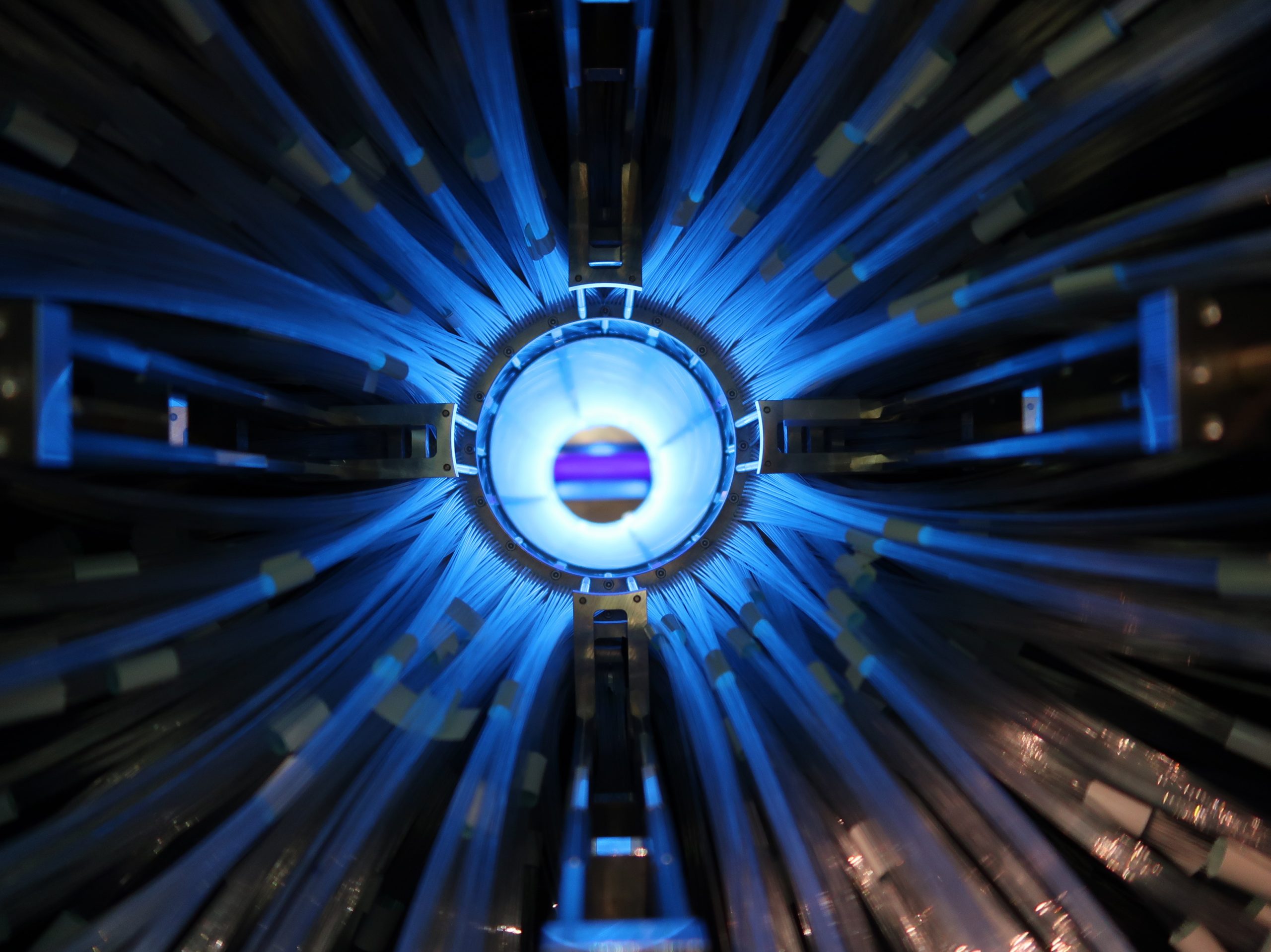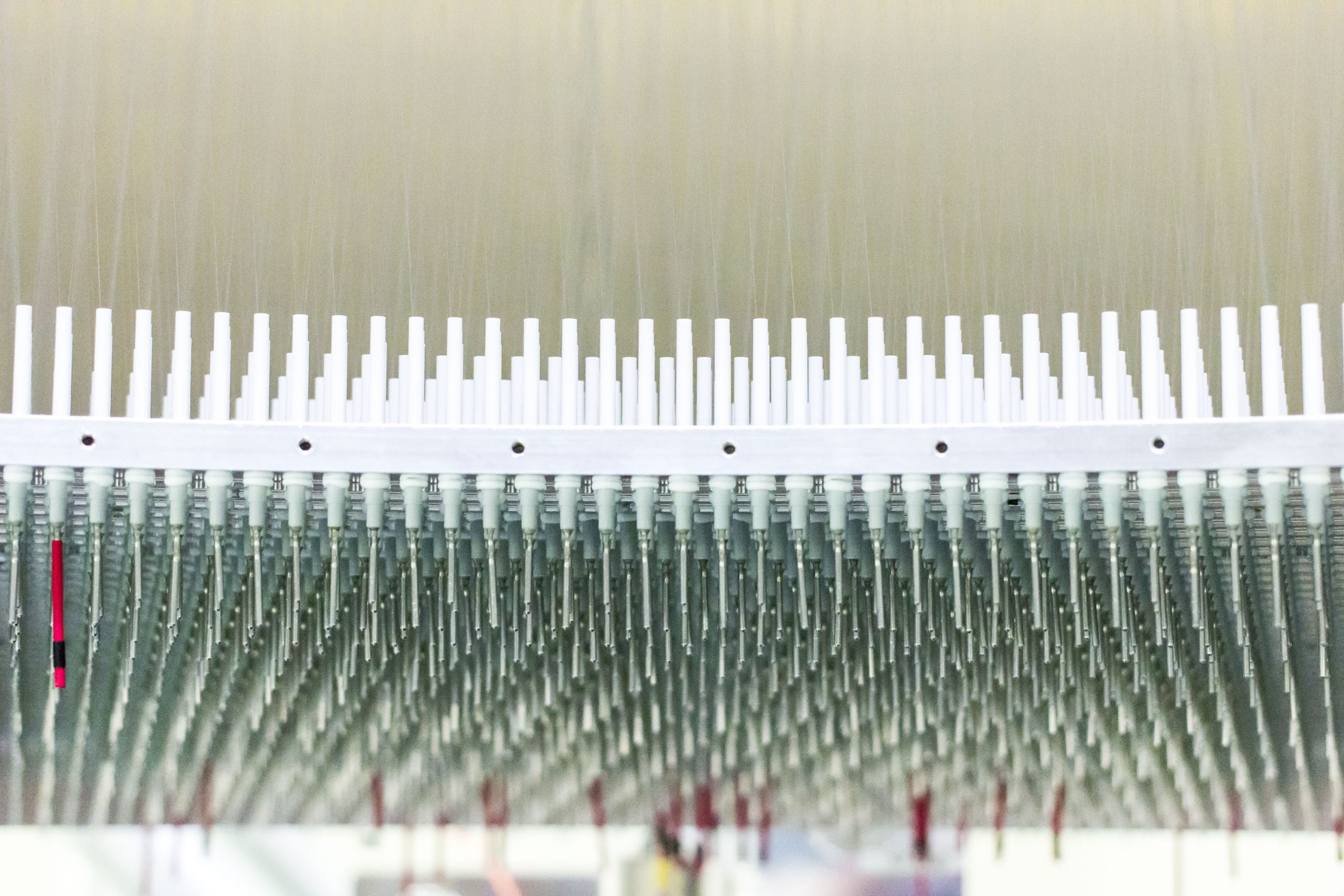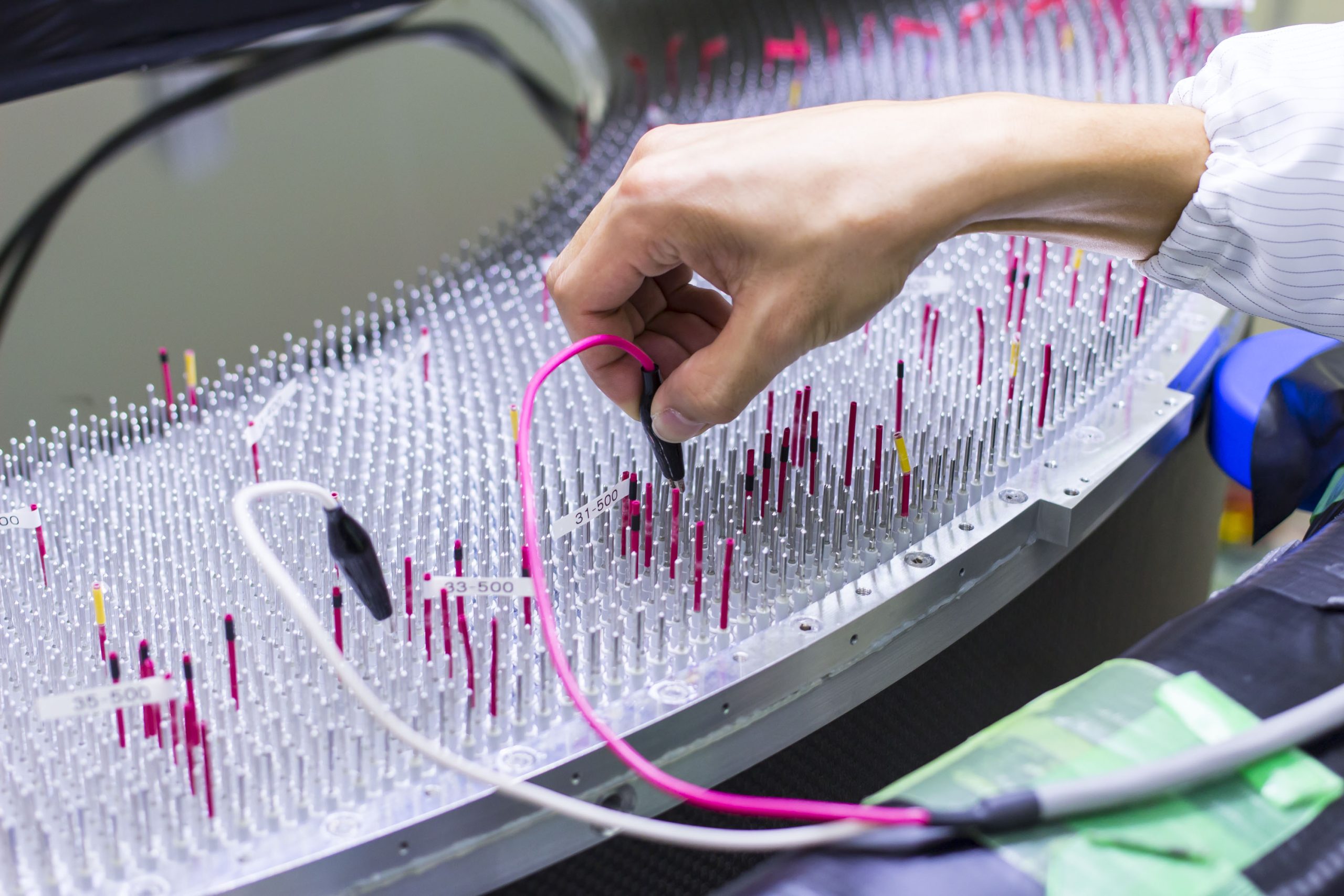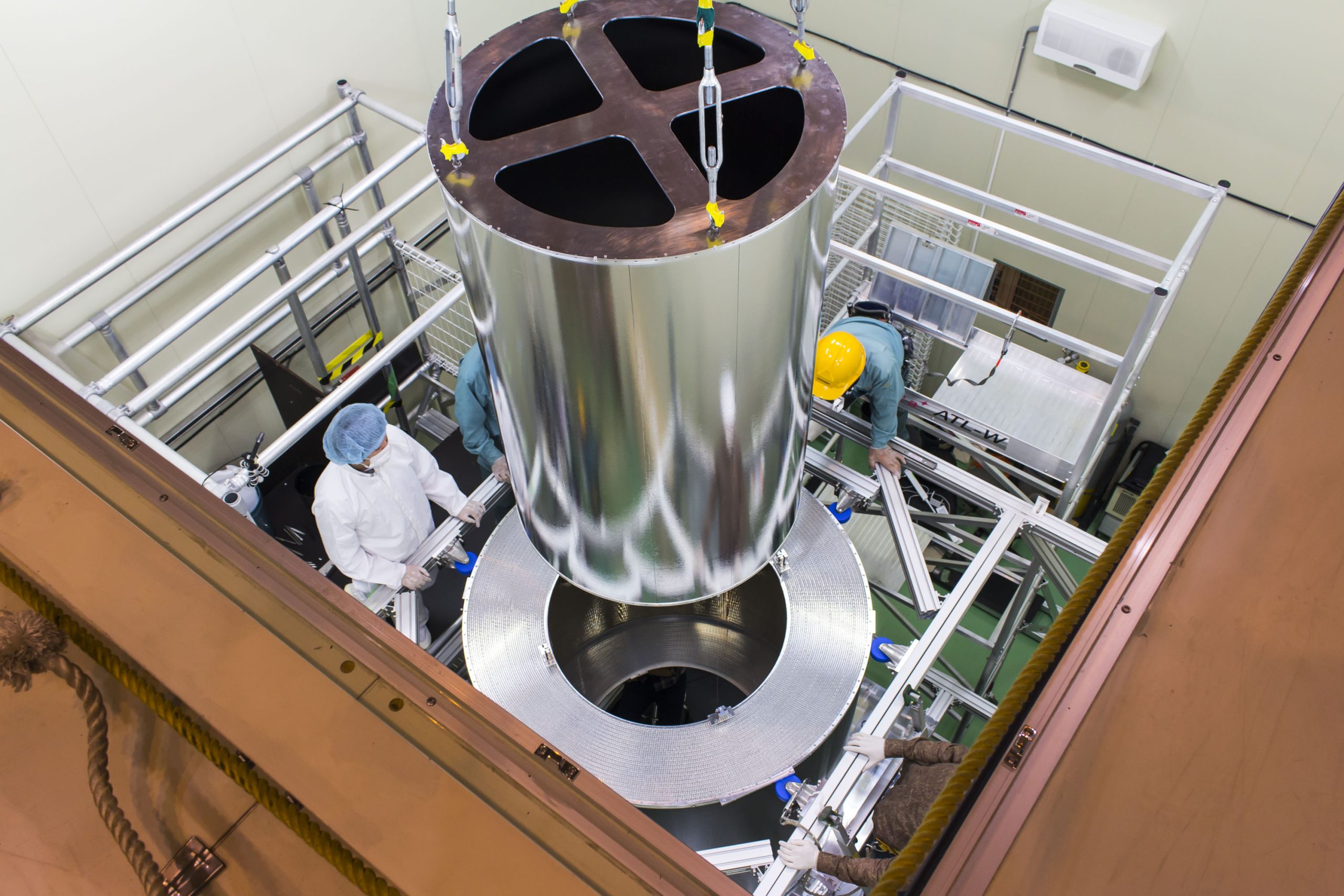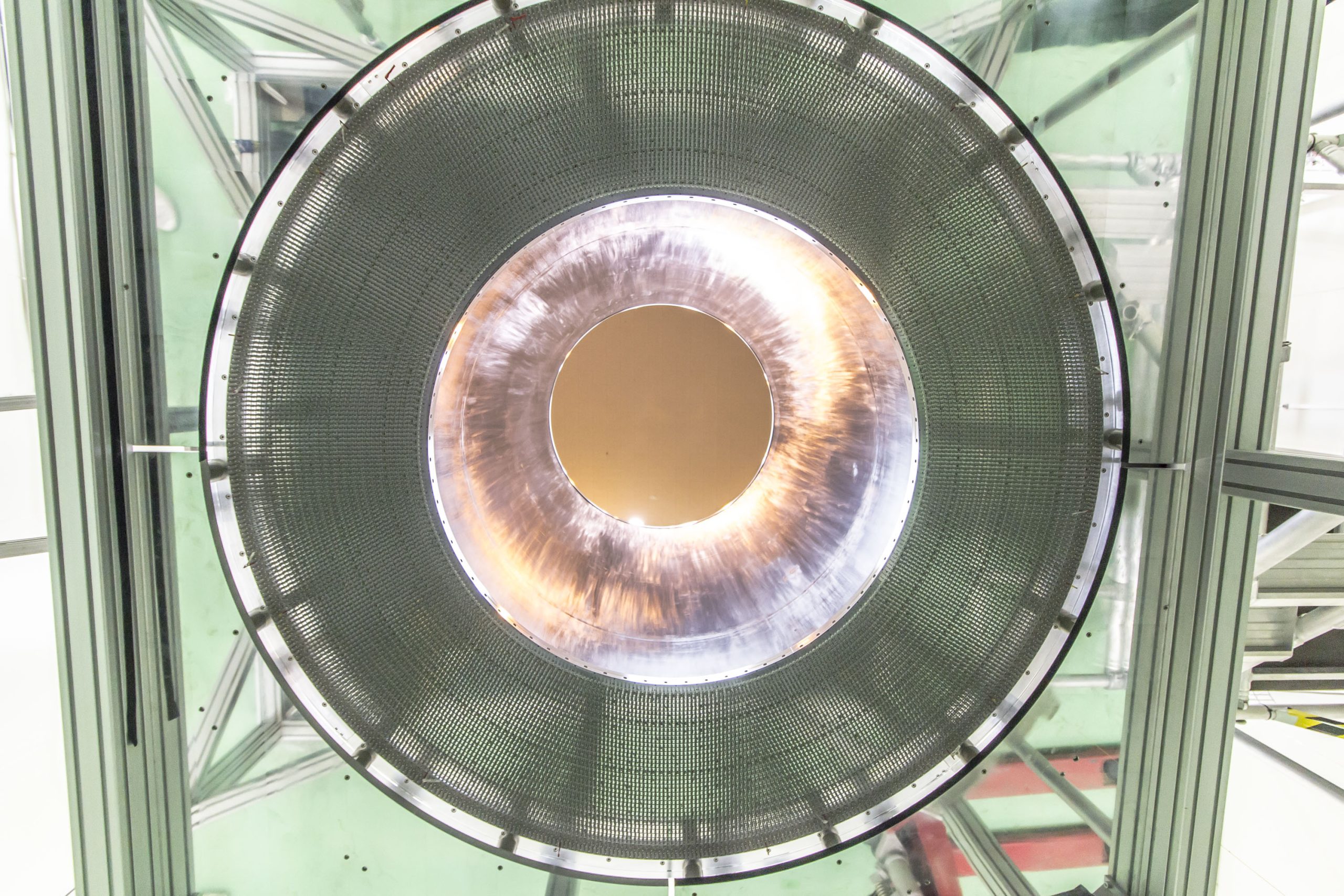- Topics
Completion of the drift chamber for COMET experiment
July 20th, 2016
-
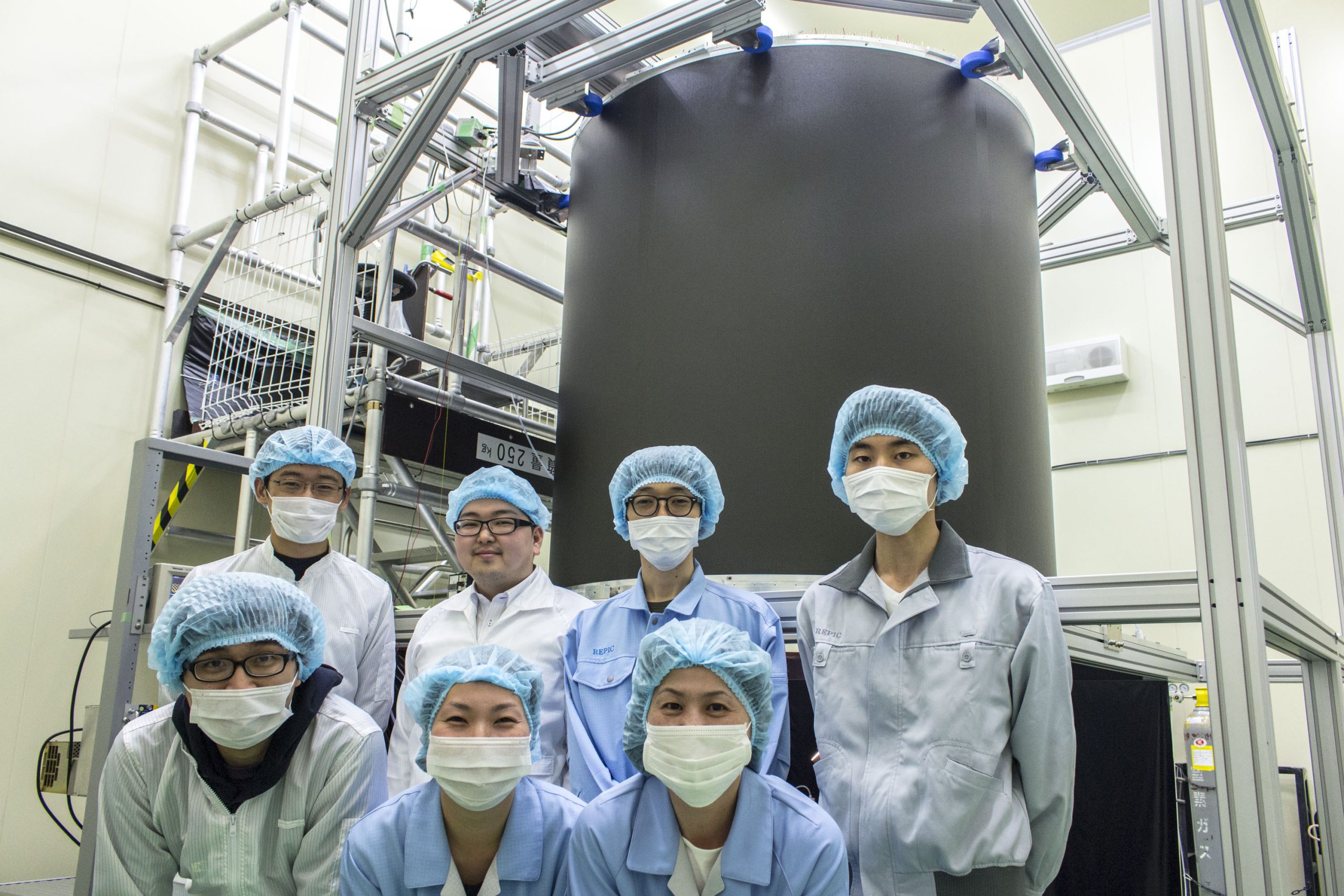
COMET CDC group : Just after finishing stringing of all wires
On June 10th, 2016, the construction of Cylindrical Drift Chamber (CDC) for the COMET experiment was finished.
On March 2015, the outer cylinder of the CDC was carried into Fuji experimental hall. Since then, the COMET CDC group, mainly led by Osaka University, carried out the stringing of wires inside the detector for almost half a year. The number of wires used in the detector is about 20,000. The researchers measured its tension one by one. If they found the one which does not meet the criteria, they had to replace it.
After the wire stringing, the drift chamber was sealed through the installation of its inner cylinder wall on June 10th. The gap between the endplates and the inner cylinder of the CDC is only 250 microns (0.25mm). Therefore the installation of the inner wall had to be performed with great care. Finally, it safely finished without any damage the internal wires and CDC itself.
Following this, the research team will check for gas leaks, and will then move on to test the detector using cosmic ray muons.
Below are some highlights from the CDC construction process.
It took half a year to string
It took almost half a year to string about 20,000 wires since it had to be done one by one by hand work.
A gold-coated tungsten wire with a diameter of 25 microns for applying a high voltage, and the aluminum wire with a diameter of 125 microns around the tungsten wire are streched inside the detector. Although the tension applied per wire is approximately 50 and 80 grams respectively, the total tension of all the wire becomes about 1.4 tons !
The outer cylinder, made of 5 mm thickness CFRP (carbon-fiber-reinforced plastic), has to support the load. The deformation due to the load was calculated by computer simulation and taken into account when designing its structure.
Tension measurement
The researchers checked the wire status whether if snapped off or entangled on the way, and the wire tension. The tension measuement was performed at the end of the day after stringing and the tension of all wires were re-measured after finishing all stringing.
Installation of the inner cylinder
After cleaning the inside CDC, the inner cylinder was installd on June 10th, 2016. A gap between the endplates and the inner cylinder of the CDC is only 250 microns (0.25mm). So the researchers worked very carefully, bringing down the clylinder along the support guide slowly using crane.
Finally, the installation finished safely without any damage to the internal wires and CDC itself.
By bolting the endplate and the inner cylinder rings, and sealing the gap with the RTV rubber, the CDC detector has finally completed ! After completion, the detector is transverse-mounted in the clean room same as in the COMET experiment in the future by rotating in the air with a crane.
Future plans
Gas leak test
The detector needs to be filled with helium-based mixed gas for operation. It is necessary to identify the actual gas leakage level although the the detector is designed and manufactured without causing any gas leak. We specify the point of the leakage using helium detector, and fix with silicone rubber.
Cosmic ray test
We plan to evaluate the performance of the detector using cosmic ray muons. We will proceed the preparations and try to draw out the maximum performance before the experiment begins.
Transportation to the Tokai Campus
After completing the cosmic-ray test with sufficient event statistics, we will transport the chamber to the Hadron Hall in Tokai campus about 100 km away from Tsukuba campus. We must take extra care not to damage the chamber while transportation. It will be the last big job for the CDC.
Prospects of the COMET experiment
Completion of the CDC is the first step for the COMET experiment along its long way to succesfull result.
“First, we would like to express great thanks to all the cooperation from KEK, instutitions and companies, which enabled completion of the conctruction, today.“ Dr. Hisataka Yoshida, Assistant Professor of Osaka University, who is in charge of the construction in the COMET CDC group, commented, “In the last fiscal year, we made the CDC prototype, which has 84 readout wires at most, but this real CDC has increased to 4986 wires. We need more complex and large-scaled analysis. Although the difficulties will increase for sure, we are really excited and looking forward to take new data with new detector.“
Stay tuned with the COMET experiment to explore the muon-electron conversion process !
Glossary
COMET Experiment
COMET experiment is one of the muon rare decay experiments which searches for so-called “muon electron conversion” process. This process violates the law of charged lepton flavor conservation. COMET is an international collaboration of 41 institutions from 15 countries.
Since the muon electron conversion process is strongly prohibited by the Standard Model of Particle Physics, if discoverd, it definitely will be an evidence for New Physics and will open the door to a new era of particle physics.
The experiment is scheduled to start around 2018, utilizing the high intensity proton beam created by J-PARC accelerator at Tokai campus. It is expected to measure branching ratio with the highest sensitivity and aims for the first discovery of the muon rare decay.
CDC detector
The CDC stands for Cylindrical Drift Chamber, which measures a momentum of particles such as electrons. It is the most important detector for the first season of the COMET experiment (we call it COMET Phase-I). The construction of the detector, simulation study and performance test with the prototype chamber were conducted by the COMET CDC group mainly led by Osaka University so far. The construction of the real CDC detector is about to complet

